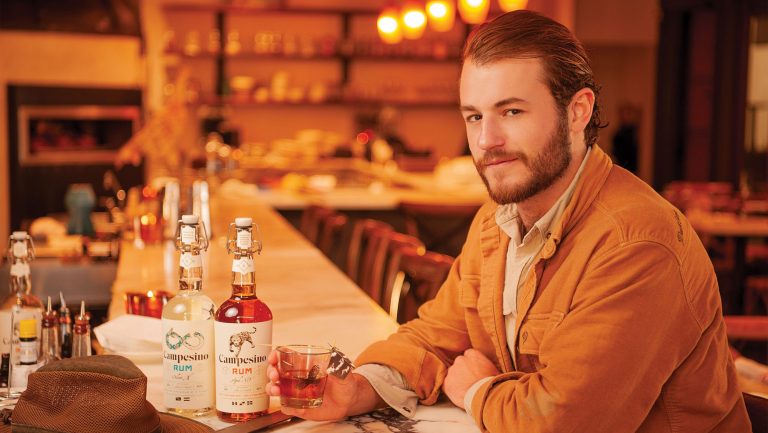The craft spirits boom is only about a third of the way into its growth cycle, though the potential for new brands to break through and become the “next big thing” is beginning to slow, according to statistics shared during a panel on mergers-and-acquisitions activity this past week. The panel—Strategic Players and the Evolving M&A Approach—was part of a series called Park Street University held at Bar Convent Brooklyn on June 11 and 12 at the Brooklyn Expo Center in New York City. The series was organized by the Miami-based Park Street, a provider of back-office logistics for brands in the alcohol industry.
Harry Kohlmann, the CEO of Park Street, moderated the panel, which featured Nick Papanicolaou, the vice president of brand and business development, who heads New Brand Ventures for Pernod Ricard USA; Jennifer Evans, the vice president of Constellation Ventures; and the Wall Street analyst Nik Modi, the managing director of RBC Capital Markets—all of whom are based in New York City.
Papanicolaou compared the growth curve of craft spirits with that of craft beer, which he said has enjoyed a “30- to 40-year supercycle” of growth that continues to climb but is now slowing. The craft spirits category, he said, is probably 10 to 15 years into that curve. “We’re definitely less than halfway … maybe a third of the way through that growth cycle,” he told the audience. “So we’re definitely excited about this.”

Don’t miss the latest drinks industry news and insights. Sign up for our award-winning newsletters and get insider intel, resources, and trends delivered to your inbox every week.
Modi pointed out that there are still segments of the spirits industry, such as vodka and whiskey, that are not dominated by big players, leaving them open for emerging brands to break out and gain significant marketshare. The top five vodka and whiskey brands make up only around 35 percent of those segments. “When the big strategics look at the level playing field, it’s like kids in a candy store,” he said. “There’s tons of opportunity out there for them [to acquire and grow an emerging brand].”
The news was not all good, however. Craft spirits have been booming long enough that the number of new products breaking through the pack is dropping. In 2010, the percentage of emerging brands breaking through after three years (defined as going from below to above 15,000 cases over that time period) was 5.6 percent. In 2015, Papanicolaou said, it was just 2.5 percent.
“We think about 10 to 15 percent of the brands out there have the potential to be breakout stars purely from a size and scalability perspective,” Papanicolaou said. For those that do break through, he added, the outlook is better than ever. “This means,” he said, “that the brands that are breaking through are going to attract a lot of interest from strategics, and they’re probably going to demand above-market valuations or multiples.”
Papanicolaou stressed the need for new craft spirits to differentiate themselves if they want to succeed. “Are you filling a need in the market that actually exists?” he asked. He also said that a brand has a better chance of success today if it’s local or regional rather than national. Additionally, new brands, he said, need to have their own energy, that is, an innate ability to generate interest from consumers; an authentic tone of voice; tangibility—meaning something about the brand that a salesman can convert to messaging; some sense of cultural relevance for today’s market, and have all of the brand’s marketing ecosystem aligned.
In the case of the brands Constellation Ventures is looking to invest in, being founded or led by a woman is a big plus. Evans explained that there is a disparity between the performance of women-owned companies and the amount of venture capital they receive. Constellation is looking to change that.
In the past 10 years, the number of women-owned companies generating $1 million or more in revenue grew by 46 percent, increased employment by 30 percent, and increased absolute revenue generated by 45 percent. “But what I found,” Evans said, “is that women-owned businesses received just 2 percent of the venture capital that’s out there today. But studies do show that they generate more than two times the revenue per dollar invested. So [these businesses represent] a huge opportunity and one that you just can’t ignore.” As a result, Constellation Ventures has pledged to invest $100 million in women-owned businesses over the next 10 years.
Modi further explained that the investment environment in the alcohol industry has changed in recent years, with fewer big deals being made overall. This has helped drive interest by the venture arms of strategic alcohol companies in “bolt-on deals,” in which they strategically acquire smaller, emerging players.
Also driving interest is the authentic nature of these spirits brands. Today’s consumers do not want a brand’s marketing messaging to tell them why they should buy it; they’d rather discover it on their own or through their peers, Modi said. “The spirits industry is positioned well in what I call today’s narrative-based, brand-building environment,” Modi said. “[It’s] really leveraging … the rich histories of some of these brands and the processes in which these products are made—and the narrative that can be told.”
With 1,300 craft distilleries operating in the U.S. today, and more being founded each year, the M&A landscape for spirits should remain active—and increasingly competitive—for years to come.

Dispatch
Sign up for our award-winning newsletter
Don’t miss the latest drinks industry news and insights—delivered to your inbox every week.
Andrew Kaplan is a freelance writer based in New York City. He was managing editor of Beverage World magazine for 14 years and has worked for a variety of other food and beverage-related publications, and also newspapers. Follow him on Twitter at @andrewkap.








